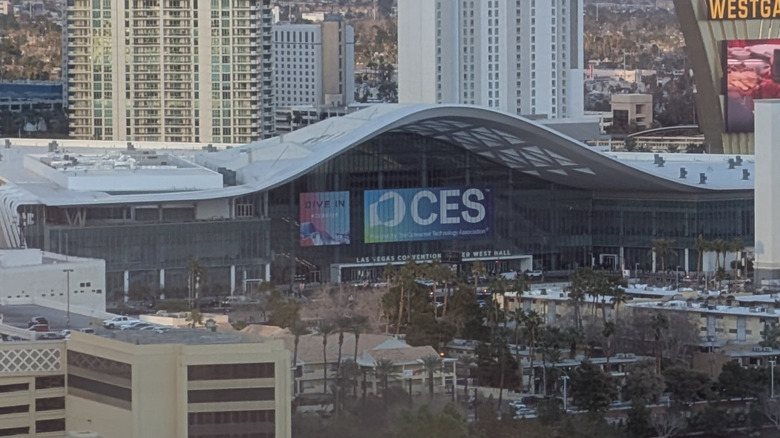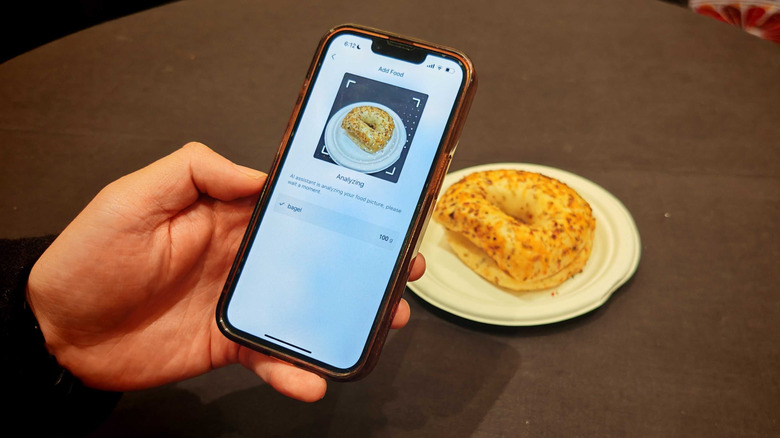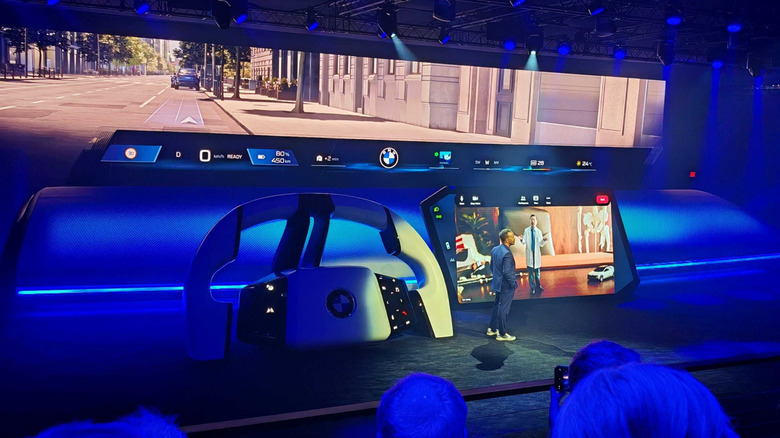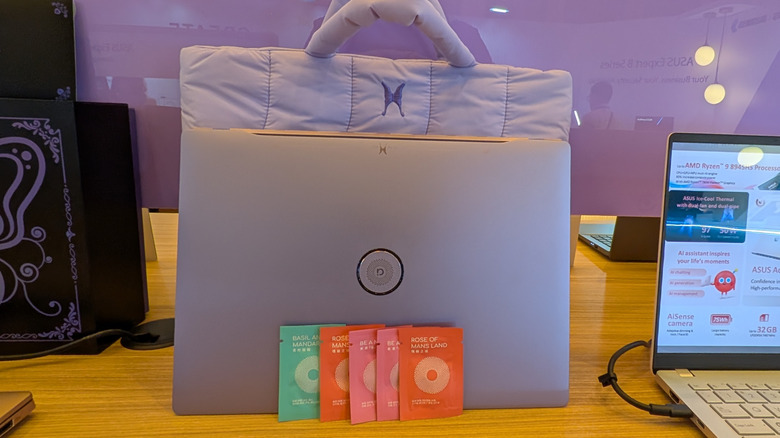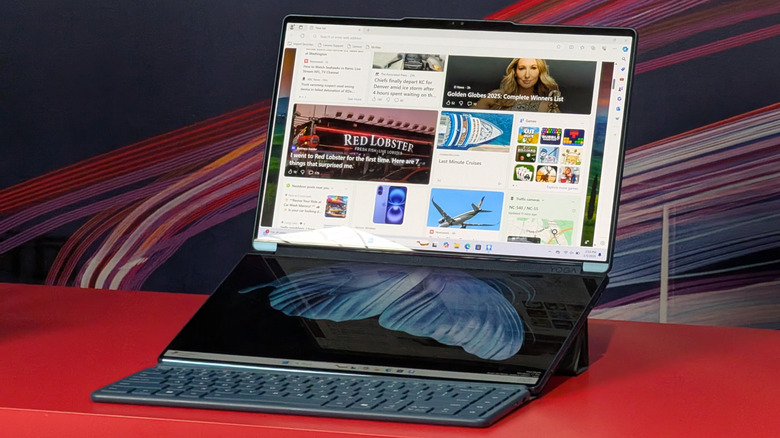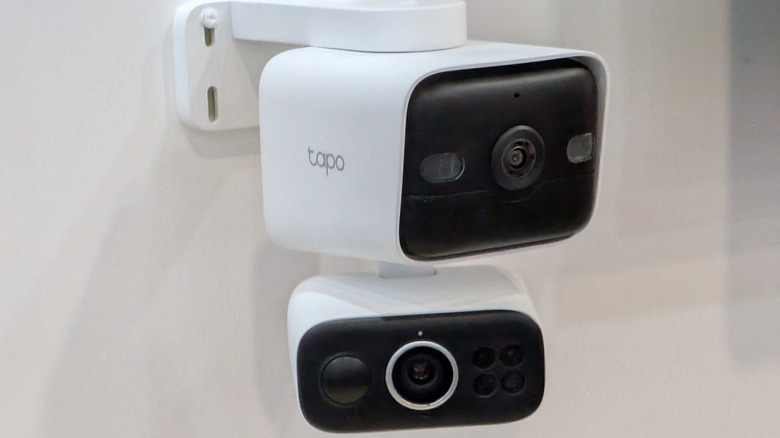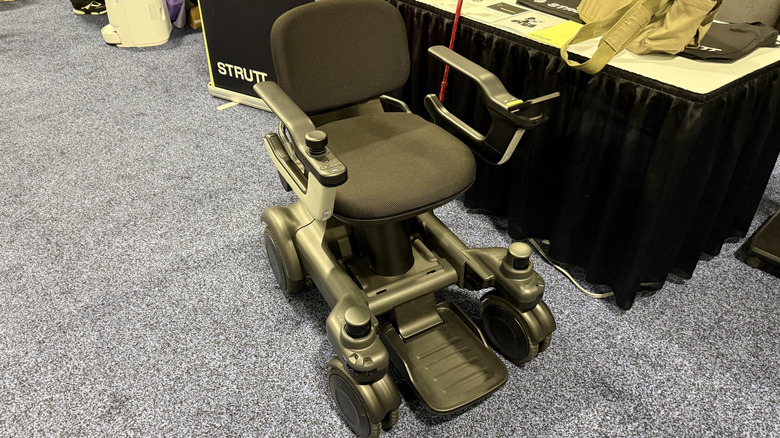CES 2025 Day 1: Things Get Larger, Things Get Smaller
The first day of CES 2025 did not disappoint; quite the opposite as a matter of fact. We hit the show floor in several different buildings, ballrooms, and suites and came away pretty impressed with what was coming soon to a website sales page near you.
CES can be something of a crap shoot (Las Vegas pun not intended) when it comes to technology that may or may not actually see the light of day. One of the challenges of CES is determining what will be on store shelves later in the year, and what will forever remain a flight of fancy. We try to narrow our focus to the former whenever possible. Sometimes we see updates to an existing product; other times, it's something brand new.
Plus, we saw an app designed to make you smaller, which is becoming more important in today's health-conscious arena. So, without further ado, here's some of the best tech we saw on opening day of CES 2025.
Amazfit's calorie tracking camera
Have you ever sat in a restaurant and wondered just how many calories you're about to cram into your face? Yes, you can look at the menu and get an idea if you're eating at a bigger chain, but that's not always an option at a smaller establishment. Plus, if you're just enjoying a bowl of chips around a friend's house, are you really going to ask them to fish the bag out of the trash so you can update My Fitness Pal?
Enter Amazfit's Zepp app, and a feature that has been there for months, but hasn't really been publicized until CES 2025. You simply take a picture of the plate in front of you and the app uses AI to recognize the type of food, approximate weight of the food, and everything else you'd need to know such as roughly how much stored energy can be consumed should that plate be finished. We don't have an exact word on accuracy here, but it's a great idea, and something that will get you closer to your dietary goal than guessing yourself. Plus, it's free for Android and iPhone, and you don't even have to own an Amazfit product to use it. So, what do you have to lose beyond those extra few Christmas pounds?
BMW's panoramic display
One of the odder, but more entertaining, happenings at CES this year was BMW's press conference. It takes place in a giant version of the Neue Klasse, or more specifically a regular Neue Klasse, with the audience members being shrunken down on their way into the hall. Ken Jeong, playing a doctor, appears via video link (and in person later on) and bumbles his way through the situation. He's not the only established comedian to crop up in BMW's demo.
Tim Meadows, of SNL fame, took on most of the hosting duties—though this was split between video segments and comedy-centric Q and A segments with various BMW higher-ups. The Germans were playing the straight men in those comedy duets, with Meadows throwing joke after joke into the mix. However, this may all be a bit of a distraction.
The dash itself looks functional but isn't too novel. We've seen plenty of similar panoramic displays, the Lincoln Nautilus springs to mind. While BMW crams more widgets than most into its new display, they're just really bigger, more broken up, versions of what you used to see on an old-school binnacle. Still, it all looks very polished, very pretty, and a little bit fun. It fits in with BMW's vision of the Neue Klasse perfectly. Plus, the company has updated its proprietary AI assistant. It has a face now, and a little touch of personality.
Asus's fragrant laptop
One product that really took us by surprise was one that you will unfortunately likely never see here in the U.S. Asus is a manufacturer of PCs and laptops, often with a gaming slant, but some of its offerings can be quite practical. But there's practical, and then there's something else. This something else will unfortunately only be released in China, but it's still pretty neat.
The Asus Adolbook 14 Air is fairly standard fare in terms of design, except for two things. First, the space bar has "Live your dream" written in script across it. Second, the lid of the laptop has a badge with a stylized lower case "a" in script surrounded by a perforated circle. The reason for this is because this magnetic badge can be taken off the laptop, and inside is a fragrance stone that is activated by heat. Do you know what a computer screen does when it's on long enough? It heats up, which in turn emits the fragrance.
The laptop comes with several fragrance tabs (each of which can last for up to 90 days, depending on usage), plus a plush laptop carrying case. It's a clever use of the heat a laptop naturally generates turning something wasteful into something useful.
Lenovo's dual screened beauty
Meanwhile, elsewhere on the laptop scene, Lenovo refreshed its YogaBook 9i laptop with a new dual-screened laptop. This one builds on the last generation in a few ways. Most notably Lenovo increased the screen size by a bit more than half an inch. Now each screen is a 14-inch display, which is really a nice, sweet spot for laptop size.
Like all previous generations, Lenovo is going with the separate keyboard in a folio accessory, rather than a keyboard that can be sandwiched between the screens, like other competitors. This keyboard is a bit larger, because it can be due to the increase in screen size, plus the folio is a bit longer as well. The reason for this is because, in addition to the origami-style laptop stand that holds both screens up at a high angle, you can also roll the folio up to place the laptop on a shallower angle, good for drawing with the included pen.
Additionally, most of the same software tricks are there, such as the eight-finger tap to bring up the keyboard, and the three-finger tap to open a virtual mouse pad. This time, the keyboard is very customizable, both in size, positioning, and style with multiple options for each, which is a nice way to build up the software.
Carrying a separate keyboard folio isn't an ideal way to go, but to be perfectly honest, it's also not terrible either. Whether or not you enjoy it will be a matter of preference.
TP-Link's dual-view security cameras
One of the biggest specifications you can look for on a security camera is the field of view. The wider the field of view, the more of your property you can see at one time. That comes at a cost though, because with wider the field of view, the more possibility there is for a loss in resolution in some areas of your camera's coverage. Images can suffer from fisheye effect if the software isn't optimized, plus like most other cameras, the image quality degrades when you zoom.
TP-Link has a unique solution to that problem — it's Tapo Dual-Lens Pan/Tilt Security Camera has two cameras in one module. The first is a standard ultra-wide camera that takes in the whole field. The second is a pan and tilt camera with a telephoto lens that can zoom in and get more detail in a particular area.
All that is controlled within the app, so if you notice something weird going on, you can zoom in. Both cameras have 4K resolution and both cameras feature full color night vision. The bottom camera can pan a full 360 degrees. It's a great solution for those who have larger yards and want to see what's going on anywhere in it.
Strutt's AI-powered mobility scooter
It seems fitting to finish off our first day of CES with a look at a device that could save us so much pain in the long run. The Strutt ev1 is personal mobility scooter which is designed to help you move through the world with the help of lidar detectors, AI, and a healthy dose of computing besides.
On its face, the scooter looks like a lot of other personal mobility scooters, with two lidar sensors down by each foot, and a Captain Kirk like screen on the left arm. The scooter uses the data from the lidar sensors to help the user maneuver around obstacles leaving the rider free to just navigate and not worry about hitting people or things.
One of the key issues with a mobility scooter is trying to navigate around obstacles and people that are all moving around you or impeding your path. The Strutt uses the lidar data and AI to help you pilot where you need to go either by nudging you to the left or to the right to avoid obstacles, or by simply stopping you in your tracks, but the really cool part comes when you add an Apple Vision Pro headset.
The creators of the Strutt ev1 added compatibility with Apple's headset that allows you to see the world and set waypoints for where you want to go, completely hands free. Basically, if you can see the spot in the headset, you can go there. For example, if you're in a room with a bunch of furniture and you want to go to the window, you can look at the floor in front of the window, and with a pinch of your fingers, set a sort of waypoint and the scooter will get you there.
The Strutt ev1 is probably coming in 2026, and if you're thinking that the addition of Apple's $3,500 headset as an optional accessory is indicative of the final price, you may be right. Strutt is still determining what the final price will be. But the convenience it adds to someone with mobility issues might just be worth the cost.
